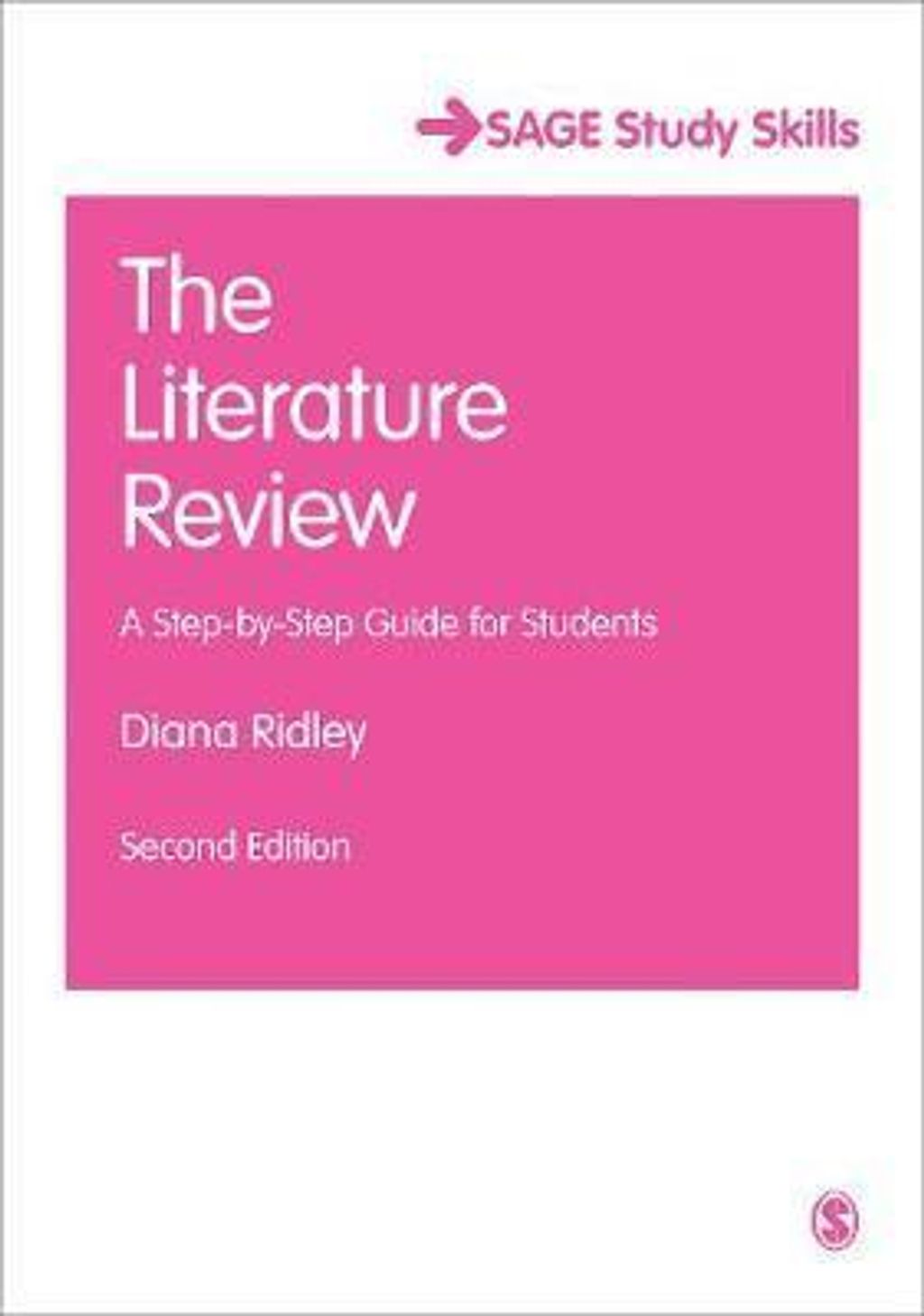
THE LITERATURE REVIEW 2E - DIANA RIDLEY 9781446201435
TITLE : THE LITERATURE REVIEW - Step by Step Guide for Student - DIANA RIDLEY (Sage Study Skill Series)
ISBN13 : 9781446201435
PUBLISHER : SAGE PUBLICATION (2012)
EDITION : 2E PAPERBACK
PAGES : 232 PAGES
This second edition of Diana Ridley's bestselling book provides a step-by-step guide to conducting a literature search and literature review, using cases and examples throughout to demonstrate best practice. Ridley outlines practical strategies for conducting a systematic search of the available literature, reading and note taking and writing up your literature review as part of an undergraduate research project, Masters dissertation or PhD thesis. New to this edition are:
Examples drawn from a wide range of disciplines
A new chapter on conducting systematic reviews
Increased guidance on evaluating the quality of online sources and online literature. Enhanced guidance in dealing with copyright and permissions issues.
Visit the Companion Website for The Literature Review
This book also comes with a companion website containing a wide range of examples of successful literature reviews from various academic disciplines.
SAGE Study Skills are essential study guides for students of all levels. From how to write great essays and succeeding at university, to writing your undergraduate dissertation and doing postgraduate research, SAGE Study Skills help you get the best from your time at university. Visit the SAGE Study Skills hub for tips, quizzes and videos on study success!
Table of contents
What Is A Literature Review?
The Literature Review At Different Degree Levels
Why Is It Important To Undertake A Literature Review As Part Of Your Research?
Where Do We Find The Literature Review In A Dissertation Or Thesis?
Structuring Your Literature Review
The Multiple Purposes of a Literature Review
The Multiple Purposes
Historical Background
Contemporary Context
Theoretical Underpinnings
Definitions And Discussion Of Terminology Used In The Research
Signalling A Gap In Previous Research And Using This To Justify Your Own
The Significance Of A Problem For Research
What Is A Literature Search?
What Are The Purposes Of A Literature Search?
Sources Of Information
Evaluating Online Sources Of Information
Different Types Of Research
Tools For Finding Relevant Sources
The Process Of Conducting A Literature Search
The Use Of Key Words And Boolean Logic
Keeping Up To Date: RSS Feeds And Email Alerts
Social Bookmarking
Reading and Note-Taking Strategies
Techniques For Reading Efficiently
Increasing Your Reading Speed
Reasons For Note Taking
Techniques For Note Taking
Three Main Formats for Note Taking
Your Own Comments
Handwritten Notes VS Computer Notes
Making Connections Between Different Texts: Using Key Words
Making Connections Between Different Texts: A Tabular Comparison
Techniques For Writing A Summary
Reference Management: Keeping Records and Organising Information
Managing The Process
A Record of Key Word Searches
A Record of Bibliographic Details
A Personal Library
Copyright Legislation
Bibliographical Software Packages
Structuring the Literature Review
The Processes Involved In The Creation Of A Literature Review
Beginning To Write
The Structure Of The Literature Review
Developing The Structure Of Your Review
The Relationship Between The Introduction And The Literature Review
Task 6.2 Reflecting On Your Own Research Field
In-Text Citations
Why Do We Reference?
What Is Plagiarism?
What Type Of Information Requires A Reference?
Referencing Systems
Integral And Non-Integral References
Disciplinary Differences in Refernce Type
Types Of Citation
Disciplinary Difference in Citation Type
Choice Of Reporting Verb
Disciplinary Difference in Reporting Verbs
Tense Of Reporting Verb
Choice Of Tense In The Clause Or Sentence Where The Information Is Reported
Effective And Unacceptable Citations
Task 7.1 Analysing Reference Techniques In Your Own Research Field
Being Critical
The Difference Between Critical Reading And Critical Writing
Being Critical In Writing
How Different Researchers Adopt A Critical Approach In Their Writing
Foregrounding Writer Voice in Your Writing
What Is Writer Voice?
The Organisation Of The Text
Unattributed Assertions Followed by Support from Citations
Summary and Evaluation of Source Material
Overall Summary at End of Section or Chapter
The Use Of Personal Pronouns
The Choice Of Citation Pattern
The Evaluative Potential Of Different Reporting Verbs
Evaluative Adjectives, Adverbs And Phrases
A Mixture Of Evaluative Strategies
The Continuing Process
The Literature Review Process
Referring To The Literature In Your Discussion Chapter
Findings Support an Existing Theory
Comparing a New Model and an Existing Theory
Explaining a Finding Using the Literature
Contribution of Current Research to Exisiting Theory
Interpreting the Data Using the Literature
Application of Theory to the Findings
Summary
A Systematic Literature Review
What Is A Systematic Literature Review?
The Process Of Conducting A Systematic Literature Review
What Is A Meta-Analysis?
Narrative Synthesis
An Example Of A Systematic Review
Appraisal Of A Systematic Review
Further Reading
Conclusion
Electronic Guides
References
![ES EXTENSTION TRADING www.1tobuy.com [1TO BUY]](https://cdn.store-assets.com/s/406307/f/7859603.png?width=350)